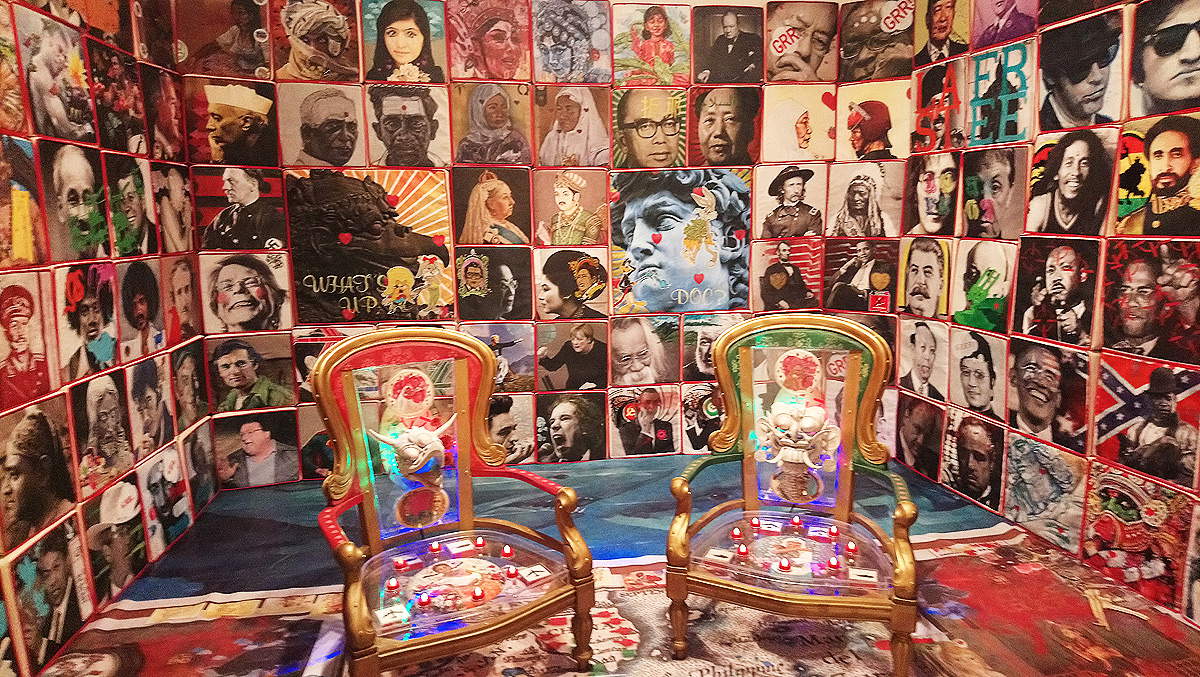Venice Biennale, Malaysia's first time: pavilion aims to reflect on country's new identity
Malaysia is taking part in the Venice Biennale for the first time this year: in this fifty-eighth edition of the international exhibition, the Southeast Asian country is among the debutant countries, and for its debut it is proposing, in the pavilion set up on the second floor of Palazzo Malipiero, the exhibition Holding up a mirror, curated by Lim Wei-Ling and featuring four artists, namely Anurendra Jegadeva, H.H. Lim, Ivan Lam and Zulkifli Yusoff. Malaysia is using the occasion of its first participation in the Biennale to highlight how Malaysian contemporary art practices have developed, celebrating the complexities of a culture that has been undergoing a recent phase of transformation and renewal.
Indeed, Malaysia has recently opened a new chapter in its history: driven by a desire for democratic change, the nation’s multi-racial, multi-ethnic, and multi-cultural people were able to come together, peacefully leading to a change made explicit in a historic national election. In this context, a spirit of optimism prevailed and national identity was redefined through the country’s own transformation. Reflecting on the overall theme of the international exhibition curated by Ralph Rugoff and titled May You Live in Interesting Times, the Malaysian Pavilion’s exhibition aims to represent a reflection around the concept of identity within the broader context of society at a time of immense political, social and economic change. Holding Up a Mirror takes its starting point precisely from considering national identity as the space where the personal and the public intersect, where myth and history collide, where national and international perspectives are constructed.
Growing up in Malaysia means coming into contact with different histories and cultures, and the very construction of identity occurs through a process of storytelling that moves between past and present, often extending across different geographies that tell stories of diaspora, migration and integration. The cultural backgrounds of the four selected artists themselves reflect the complex narrative of Malaysia. While each of these artists is in fact Malaysian, at the same time their ethnicities, religions, and cultural roots immediately shed light on the diverse realities that make up the national identity. Together, the works on display represent an investigation of the self within the larger framework of community, aiming to demonstrate that identity is heterogeneous and in constant flux: it is an interweaving of many personal narratives into a shared fabric of public consciousness that is both diverse and unified. Through the use of diverse media (painting, video, sound and installation), the artists represented offer a reflection on their individual research on identity, embracing concepts and ideologies revolving around the themes of otherness, cultural hegemony, patriarchy and globalization.
Commenting on her role at the launch of Malaysia’s first National Pavilion, curator Wei-Ling said, “I always wondered why my country had never been represented within the major international art platform and it has always been a great ambition of mine to be able to lead the first National Pavilion. So I decided to ask the Honorable Prime Minister for his blessing to pursue this project, and I was very pleased to know that I shared with him the same desire to elevate Malaysian art to the international arena. During the artist selection phase, it was very important to think that we could work with professionals who could meet the challenge we were facing and come up with inspiring works that would best represent contemporary Malaysian art today. Malaysia’s inaugural pavilion at the 58th. International Art Exhibition of the Venice Biennale is therefore hosting the works of four artists who have already embarked on extraordinary careers and enjoy solid reputations, both in Malaysia and abroad. This pavilion is a first step forward for the country and I hope it will mark the beginning of many more future national pavilions that can represent many more Malaysian artists worthy of exhibiting their work within the framework of the Venice Art Biennale.”
Pictured: a room of the Malaysian Pavilion at the 2019 Biennale.
 |
| Venice Biennale, Malaysia's first time: pavilion aims to reflect on country's new identity |
Warning: the translation into English of the original Italian article was created using automatic tools. We undertake to review all articles, but we do not guarantee the total absence of inaccuracies in the translation due to the program. You can find the original by clicking on the ITA button. If you find any mistake,please contact us.





























